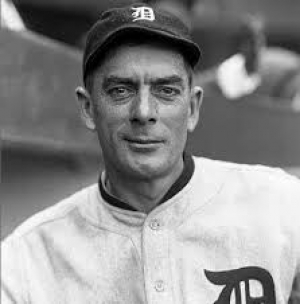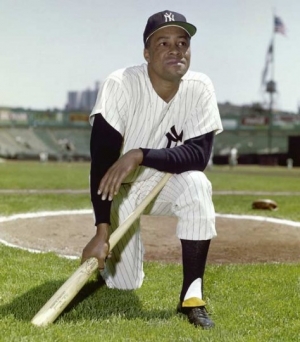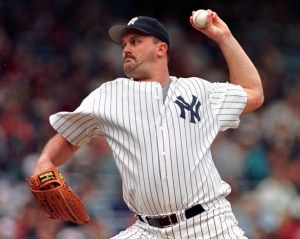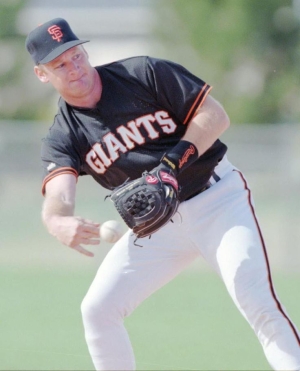Baseball
Established in 1936, and currently based in Cooperstown, New York, the Baseball Hall of Fame may be the most prestigious of any Sports Hall of Fame. Although Baseball may have taken a backseat to Football in recent years, there is no doubt that Baseball’s version of the Hall of Fame is by far the most relevant and the most difficult to get enshrined in. At present, a player has to receive seventy five percent of the votes from the Baseball Writers Association of America, which has proven to be no easy task. Failing that, a player could be inducted by the Veterans committee, though few have been inducted this way. Our list will focus on the players only, and although we could easily do a tally focusing on mangers, broadcasters or other vital personnel, as always it is far more enjoyable to discuss the merits of those on the field as oppose to those off of it.Until Then, Let’s get some peanuts and cracker jacks and cast some votes of our own!
Sincerely,
The Not in Hall of Committee.
James Leslie “Hippo” Vaughn appeared in two games for the New York Highlanders (later to be the Yankees) in 1908, and after a full year in the minors, he had a promising 1910 campaign with a 13-11 record and an ERA of 1.83. It wasn’t quite the springboard to greatness, as he struggled over the next three seasons, going back and forth from the minors, and bouncing to the Washington Senators and then the Chicago Cubs. In the Windy City, he would live up to that potential that New York fans saw in 1910.
Bobby Veach played most of his career with the Detroit Tigers, where he showed off a good bat and good speed.
Jimmy Sheckard spent most of his career with either Brooklyn or the Chicago Cubs, and while they were both high-profile teams, Sheckard is one of the most undervalued players in history.
The professional career of Elston Howard began in the Negro Leagues with the Kansas City Monarchs in 1948, but the New York Yankees would sign him in 1950. After two years in the military and two years in the minors, Howard debuted in pinstripes in 1955.
Mark Grace is the answer to the question of the trivia question; Who had the most Hits in the 1990s?
While Jason Giambi is better known for being an inflated PED user, the fact remains that he was a very good hitter who was a former American League MVP. Giambi would go to five consecutive All-Star Games, blasted 440 Home Runs with a .516 career Slugging Percentage over a twenty-year career. He would also show solid plate discipline with three On Base Percentage Titles and retired with a very good 50.4 bWAR.
Jimmy Key played his entire career in the American League East, dividing between three teams, Toronto, New York, and Baltimore, finding success with all three clubs.
Dolph Camilli came up with the Chicago Cubs, and they arguably gave up as he was prone to the Strikeouts, and he was traded to the Philadelphia Phillies. With Philly, he still struck out a lot but was developing a strong power game. In 1935, through 1937, the First Baseman would have at least 25 Home Runs, and in the latter two years, he would bat over .310. In that last season, Camilli would have a league-leading On Base Percentage (.446).
One of the more interesting characters of the game, David "Boomer" Wells, played 21 seasons in the Majors for nine different teams, three of which he had two stints. Wells longevity allowed him to amass a record of 239-157 with 2,201 Strikeouts, but don't view him as a "compiler."
Larry Jackson played for some good teams, but never any great ones (he never played in the postseason). As such, Jackson never made the 200 Win club, but his value as an innings eater was essential to the success that many of his teams had.
Lew Burdette was the star righthander for the Milwaukee Braves in the 1950s, but his career was a tad on the complicated side to dissect.
Ted Kluszewski was a monster in his day. This was not just in regards to his tape measure Home Runs, but that he was such an imposing physical specimen that he cut off the sleeves of his uniform so that his arms could better move.
Warning: Undefined property: stdClass::$dateTime in /home/notinhal/public_html/modules/mod_seatgeek/helper.php on line 52
Warning: Undefined property: stdClass::$dateTime in /home/notinhal/public_html/modules/mod_seatgeek/helper.php on line 64
Warning: Undefined property: stdClass::$dateTime in /home/notinhal/public_html/modules/mod_seatgeek/helper.php on line 52
Warning: Undefined property: stdClass::$dateTime in /home/notinhal/public_html/modules/mod_seatgeek/helper.php on line 64
Warning: Undefined property: stdClass::$dateTime in /home/notinhal/public_html/modules/mod_seatgeek/helper.php on line 52
Warning: Undefined property: stdClass::$dateTime in /home/notinhal/public_html/modules/mod_seatgeek/helper.php on line 64
ARIZONA DIAMONDBACKS - TICKET + HOTEL DEALS
Mar 24, 2025
Buy your Tickets to see Arizona Diamondbacks - Ticket + Hotel Deals HERE!
2025 TORONTO BLUE JAYS - TD EXECUTIVE SUITES
Jan 01, 1970
Buy your Tickets to see 2025 Toronto Blue Jays - TD Executive Suites HERE!
2025 TORONTO BLUE JAYS FLEX PACKS
Jan 01, 1970
Buy your Tickets to see 2025 Toronto Blue Jays Flex Packs HERE!
PREGAME GLIMPSE OF GREATNESS
Jan 01, 1970
Buy your Tickets to see Pregame Glimpse of Greatness HERE!
Matt Williams was a cornerstone of the San Francisco Giants for a decade (1987-96), where he played in the infield, switching between Third Base and Shortstop.
Lynwood Thomas "Schoolboy" Rowe was a Texas boy through and through, and when he joined the Detroit Tigers in 1933, the Michigan fans loved the superstitious Pitcher.
The story of Howard Ellsworth "Smoky Joe" Wood is typical in that and we have a power pitcher who was dominant for a short time, only for arm fatigue to cause an early end of his pitching career (though he would continue to play, but we'll get to that later.)
Darryl Strawberry was at one time the most feared hitter in the National League, and a case could be made that he was also the most recognized.
Brett Butler was only an All-Star once, but don’t let that fact misguide you to what was one hell of a baseball player.
From 1895 to 1899, Harry Davis was either a budding journeyman or a future star. He played for four different teams in the National League and had a 28 Triple year in 1897 while batting .305. Davis was in the minors for all of 1900, and Connie Mack, the owner/manager of the Philadelphia Athletics, saw him as a building block for his brand new American League franchise, and he was one of their first signees.
Before there was Ernie Banks, there was Phil Cavarretta, who many in Chicago referred to as "Mr. Cub," before that was universally bestowed upon Banks.



















